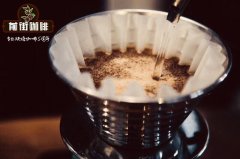Is the charred aroma of coffee exclusive to deep roasting? how do you describe the aroma of coffee? you can drink it.

Professional coffee knowledge exchange More coffee bean information Please pay attention to coffee workshop (Weixin Official Accounts cafe_style)
Front Street-Coffee Aroma Source Introduction
Coffee beans change differently at each stage of roasting. After the green coffee beans absorb heat, the color begins to change from green to yellow, and the moisture content of the beans begins to decrease. Heat converts the moisture inside the coffee beans into steam → Carbon dioxide is produced inside the coffee beans → The internal pressure of the coffee beans reaches 25 bar (pressure unit) → First explosion: The coffee beans typically explode during roasting.
Flavor development: the longer the roasting time, the less sour and bitter the coffee beans begin to release heat and turn brown after dehydration, and a layer of silver skin will be removed. Roasted coffee beans increase in volume by 1. 5 - 2 times, at least 11% weight loss. Continue roasting coffee beans will continue to produce carbon dioxide → second explosion.
The beans deepen in color and enter the medium-dark roasting stage. At this point, the weight loss reached 22% of the original weight. After the second explosion, the coffee bean surface oil due to pyrolysis reaction, and began to carbonize, one does not pay attention to it is likely to burn.
Three to four aromas begin to develop during the drying phase. Coffee aroma and flavor are released through two chemical reactions:
? Menard reaction: Chemical change in sugars and amino acids to degrade proteins when the moisture content of coffee beans is less than 5%. Caramelization: Chemical reaction between water, sugar, and sucrose.
As the baking time increases, the sourness gradually decreases, the bitterness increases, and many aromatic molecules begin to volatilize. At the end of roasting, nearly 800 aroma substances will develop, and the flavor, acidity, sweetness and alcohol of coffee beans will also reach maturity. But roasting can sometimes bring out coffee's unwelcome flavor. In the final stage, the aroma is destroyed and replaced by bitterness, the sourness is lost and the alcohol is reduced.
Flavor Description One of the most intimidating parts of coffee tasting is also the most frustrating. Roasters describe flavors not only in terms of nutty or floral flavors, but also in terms of a wide range of sensory terms, such as ripe apple tones in coffee, which give you a sense of sweetness and sourness.
If you have the ability to identify flavors, record them; otherwise, don't worry too much. Any word you can think of to describe a flavor will come in handy, whether it has something to do with taste or not.
Knowledge points: light roast to sour and flavor based, if the roasting process is not appropriate will have astringency and irritation, while the coffee body and flavor feel low.
In brief: Qianjie is a coffee research center, happy to share knowledge about coffee with everyone, we share it without reservation only to let more friends fall in love with coffee, and there will be 3 low discount coffee activities every month, because Qianjie wants to let more friends drink the best coffee at the lowest price, which is also the purpose of Qianjie for 6 years!
END
Important Notice :
前街咖啡 FrontStreet Coffee has moved to new addredd:
FrontStreet Coffee Address: 315,Donghua East Road,GuangZhou
Tel:020 38364473
- Prev

How does the aroma of coffee come out? the strong aroma of coffee beans is fried just right.
Professional coffee knowledge exchange more coffee bean information please follow the coffee workshop (Wechat official account cafe_style) front street-coffee aroma source introduction 1 caramel reaction the sugar in coffee beans caramel reaction at about 170 to 200 ℃, which is exactly the melting point of sucrose [185 ℃], the temperature of the explosion stage when coffee beans are roasted. The product of caramel reaction is divided into two parts: the dehydration of a sugar.
- Next

How to describe the aroma of coffee is correct. How to describe the flavor of coffee doesn't have to be complicated.
Professional coffee knowledge exchange more coffee bean information please follow the coffee workshop (Wechat official account cafe_style) front street-coffee aroma description introduction 1. Olfaction (sense of smell): each kind of coffee has a unique flavor (bouquet), which distinguishes different producing areas or kinds of coffee. A, Dry aroma/ fragrance- dry aroma; coffee grinding
Related
- Beginners will see the "Coffee pull flower" guide!
- What is the difference between ice blog purified milk and ordinary milk coffee?
- Why is the Philippines the largest producer of crops in Liberia?
- For coffee extraction, should the fine powder be retained?
- How does extracted espresso fill pressed powder? How much strength does it take to press the powder?
- How to make jasmine cold extract coffee? Is the jasmine + latte good?
- Will this little toy really make the coffee taste better? How does Lily Drip affect coffee extraction?
- Will the action of slapping the filter cup also affect coffee extraction?
- What's the difference between powder-to-water ratio and powder-to-liquid ratio?
- What is the Ethiopian local species? What does it have to do with Heirloom native species?

